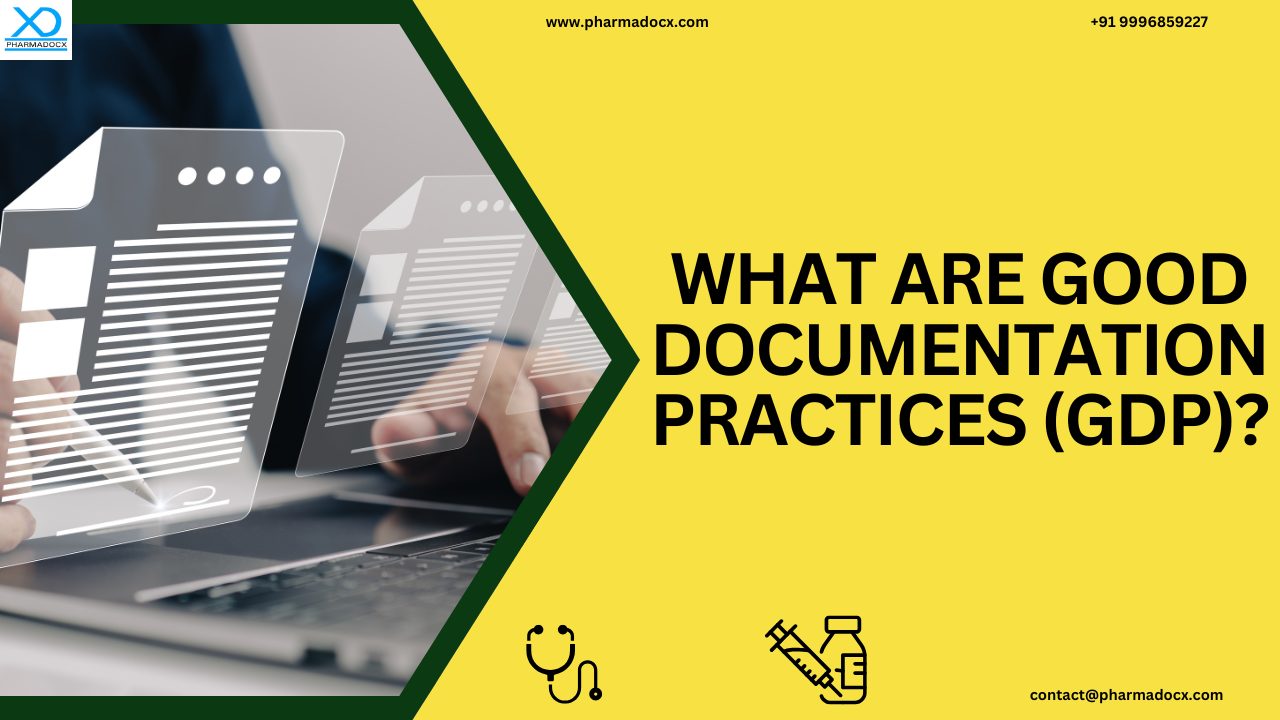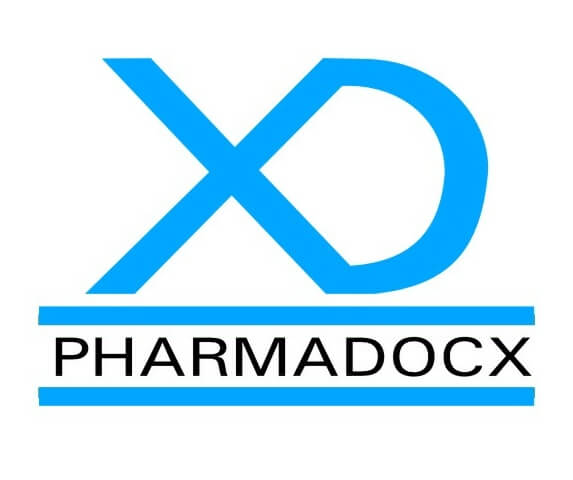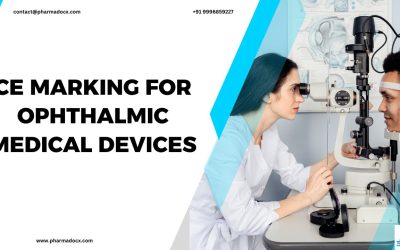Good documentation practices (GDP) describe best practices for creating and maintaining documentation in both paper and electronic format. These practices are used in pharmaceutical industry, medical device industry, and laboratories. It is basically a set of good recordkeeping practices to help ensure the quality and integrity of the data recorded. In this blog, we have discussed what is good documentation practice as well as its core principles. Additionally, we have provided some pro tips for compliance with GDP guidelines.
What are good documentation practices (GDP)?
Good documentation practices (GDP) provide a systematic procedure of preparing, reviewing, approving, issuing, recording, storing, and archiving documents. It basically outlines standards based on which documents are created and maintained. Thus, GDP provides guidelines one should follow for recording information in a legible, traceable, and reproducible manner. Proper documentation is a tangible proof of regulatory compliance at every step of the production process. On the other hand, poor documentation can lead to non-conformities and regulatory lapses. Adopting rigorous GDP practices brings you a step closes to regulatory compliance. Moreover, most regulatory guidelines require pharmaceutical and medical device industries to comply with GDP guidelines.
Purpose of GDP:
- Compliance with regulatory requirements
- Ensures reliable and consistent transfer of information
- Proper documentation helps ensure product quality and safety
- Prevents dishonesty and fraud, which is essential for producing quality results
- Provides control of processes and improves performance
- Important information is communicated clearly and accurately
- Ensures everyone involved is on the same page
What are the core principles of good documentation practices (GDP)?
- Legibility: Records must be clear and readable. Documentation, including signatures, should be understandable and identifiable.
- Accuracy: Information must be correct and verified at the time of recording. Good documentation practices (GDP) guidelines require documents to be free of errors, consistent, and a real representation of facts.
- Timeliness: Entries should be made at the time the activity occurs and not before or after. The documentation should flow in a correct and appropriate timeframe.
- Attributability: It must be clear who created or modified the data. Signatures, initials, or electronic records should be used to maintain attributability. The information should be traceable to the person, date, and time (as appropriate).
- Originality: The original source data and documentation should be preserved. Usually, carbon copies or scanned files are not valid substitutes unless justified. However, an exact/certified copy of the original (as appropriate) can be maintained, with notation referencing to the original source.
- Consistency: Approved templates, formats, and controlled documentation should be used to minimize differences in documentation.
- Traceability: All changes should be easily traceable, with a clear audit trail.
How does GDP fit into GMP?
Good documentation practices (GDP) and good manufacturing practice (GMP) are the two major pillars of regulated industries, such as pharmaceutical and medical devices. GDP actually lies at the core of GMP. On the one hand, GMP covers the entire manufacturing process ensuring high-quality products are consistently manufactured and controlled per quality standards. On the other hand, GDP focuses specifically on properly and reliably documenting the activities of the manufacturing process. We have highlighted how GMP and GDP are interrelated:
- Focus: GMP provides guidelines and controls for maintaining consistent quality during the entire manufacturing process. GDP provides standards for recording and maintaining accurate and legible documentation of the entire manufacturing process.
- Purpose: GMP ensures safe, high-quality, and effective products are consistently manufactured. GDP ensures transparency, traceability, and data integrity.
- Scope: GMP covers facilities, equipment, people, and procedures. GDP covers paper-based and electronic records, forms, logs, and batch documents.
- Outcome: GMP guarantees properly manufactured and quality assured products in every batch. GDP helps maintain documentation that proves accountability and compliance of the entire manufacturing process.
- Regulatory expectations: Compliance with GMP guidelines is a mandatory requirement of most regulatory authorities, such as US FDA, EU MDR, Health Canada, CDSCO. GDP is used to demonstrate compliance with GMP guidelines throughout the manufacturing process. Hence, GDP has a vital role in proving regulatory compliance. Moreover, proper documentation is a standard regulatory requirement.
Therefore, GDP is used to prove GMP compliance of the manufacturing process in place.
6 pro tips for compliance with GDP guidelines
We have provided some pro tips for you to easily comply with good documentation practices (GDP) guidelines.
- Data entry standards: Most importantly, entries should be made at the time of the activity and not before or after. Each entry should be legible, complete, and accurate. Moreover, mistakes should be corrected with a single line-through, dated, and initialled with the reason for correction.
- Document creation and formatting: Use approved templates and controlled forms for recording information. Title, version number, and document ID should be clearly displayed in every document. Additionally, proper pagination formats should be used. Moreover, blank fields should be labelled with “N/A” where ever not applicable and should never be left empty. Use permanent indelible black ink for recording information.
- Attribution and sign-offs: Every entry should include signature/initials, date, and time (if required). Additionally, electronic systems should be 21 CFR Part 11 compliant. They should be secure and traceable with e-signatures. Dual sign-off, i.e., verifier and executor, may be required where mandated.
- Revisions and change control: All document changes should be tracked through a formal document change request (DCR). Old versions should be archived and access-controlled. Additionally, revision history should be clearly documented for compliance with GDP guidelines.
- Storage, retention, and security: Records should be stored securely for the required retention period as per regulatory good documentation practices (GDP) requirement. Notably, access to the documents should be restricted based on role. Procedures should be in place for retrieving, archiving, and disposing of records documented. Backup protocols are required for electronic data, with disaster recovery plans in case of adverse events.
- Data integrity and audit trail: No unexplained gaps in data or duplicate entries should be present. System-generated records should have timestamp and user ID. Deviations or unexpected events should be recorded along with follow-up and CAPAs. Furthermore, every record should be reviewed and approved before closure.
Good documentation practices (GDP) guideline compliance challenges
We have highlighted some common GDP guideline compliance challenges faced in the industry.
- Human error: Mistakes made during manual entries without proper correction protocols can lead to non-compliance with GDP guidelines.
- Timing and backdating: Entries made hours or even days after the task was done is a common issue. Additionally, missed real-time documentation during busy shifts can be a common GDP compliance challenge.
- Lack of training on GDP guidelines: Untrained staff will not understand the importance of GDP compliance. They may be unaware of acceptable abbreviations, formats, or approval flows.
- Poor document control systems: Use of outdated SOPs can be a major flaw. Missing version numbers or change histories will lead to GDP non-compliance. Moreover, inefficient data retrieval systems will make audits and inspections difficult.
- Inadequate audit trails: Inadequate audit trails will make it difficult to track changes. Additionally, absence of timestamps will make it challenging to trace deviations and unexpected events during record keeping.
- Data integrity gaps: Unexplained gaps in data or duplicated entries are major issues encountered. Non-attributable changes with no trace of who edited what, when, or why as well as failure to log deviations or corrections transparently are some of the common challenges faced.
- Fast-paced production environment: A fast-paced manufacturing environment can lead to documentation lapses. Incomplete entries or skipped steps are commonly observed issues.
Medical device and pharmaceutical industries are strictly regulated. Regulatory guidelines require proper documentation to prove regulatory compliance. We at Pharmadocx Consultants provide comprehensive documentation service. Our documents are prepared per good documentation practices (GDP) guidelines. Avail our all-encompassing document preparation service for hassle-free regulatory documentation. Drop an email at [email protected] or call/Whatsapp on 9996859227 to let us help you prepare your necessary documents.





